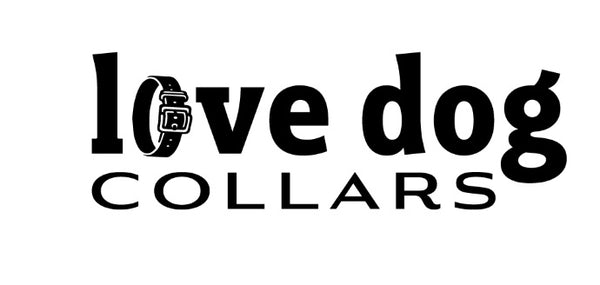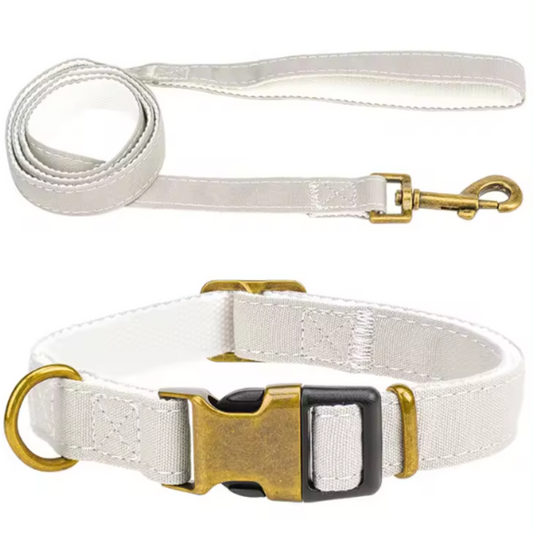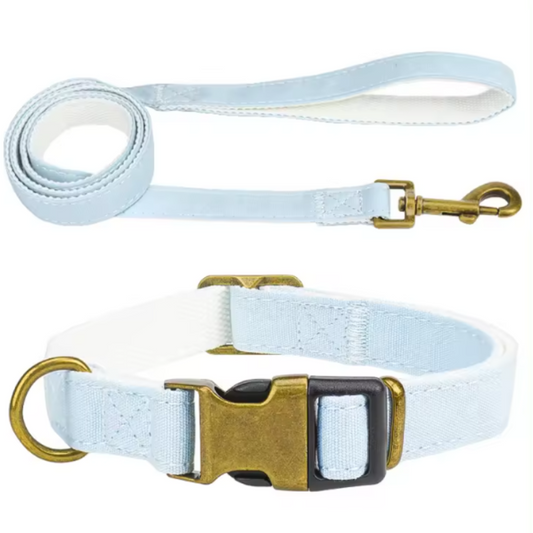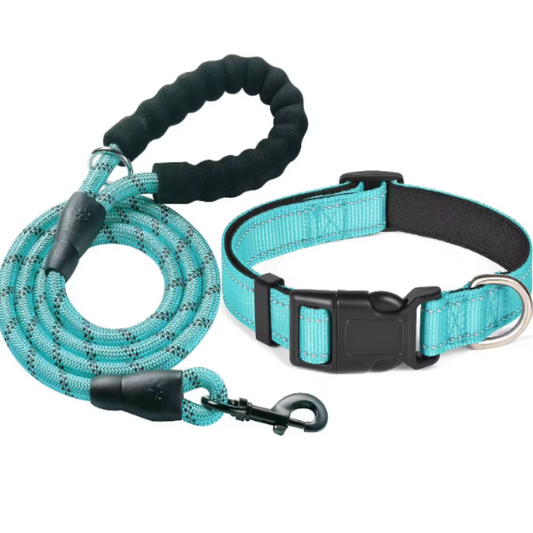A dog collar and lead are essential tools for every dog owner. Not only do they help maintain control and safety, but they also play a role in training and identification. Whether you're a new dog parent or have had dogs for years, selecting the right collar and lead combination can make a significant difference in your dog's daily life.
Why Do Dogs Need Collars?
A dog collar serves multiple functions, ranging from practical to aesthetic. Primarily, it acts as a way to keep your dog safe. A well-fitted collar allows you to attach a leash, ensuring your dog stays by your side when out on walks. Even the most well-trained dogs can sometimes get distracted and try to run off, so having a reliable collar and lead provides much-needed control in unpredictable situations.
Another crucial function of a collar is to hold ID tags. Many places, including the UK and some states in the US, have laws that require dogs to wear identification when they're outside the house. An ID tag typically includes your dog's name, your phone number, and possibly other details like vaccination information. This can be a lifesaver if your dog ever gets lost, as it provides a way for anyone who finds them to quickly return them to you.
Choosing the Right Collar Size
The size of your dog’s collar is essential for their comfort and safety. If the collar is too tight, it can cause discomfort, skin irritation, and even injury. A collar that is too loose, on the other hand, may slip off, allowing your dog to escape. A good rule of thumb is the two-finger test: you should be able to comfortably fit two fingers between your dog’s collar and their neck. Regularly check the fit of the collar, especially for puppies, as their neck size can change quickly as they grow.
Adjustable collars are a great option because they can be easily modified to fit your dog’s neck as they grow or if they gain or lose weight. This flexibility makes them an economical choice for growing puppies or dogs that fluctuate in size.
Best Materials for Dog Collars
Collars come in a variety of materials, each with its own benefits. Leather collars are popular because they are durable, comfortable, and tend to age well. Leather is also resistant to wear and tear, making it ideal for active dogs who spend a lot of time outdoors. Plus, they have a classic look that many dog owners love.
However, leather may not always be the best choice for every dog. Nylon collars, for instance, are lighter and often more affordable. They're available in a wide range of colors and patterns, which allows you to find something that reflects your dog’s personality. On the downside, nylon can be less durable than leather, especially for large, strong dogs who pull on their leash. For dogs with sensitive skin, some owners opt for softer materials like hemp or canvas, which are gentler on the skin.
Leashes: Why They're Just as Important
Just as critical as the collar is the lead or leash. A leash connects to the collar and provides you with control during walks. Leads come in different lengths and materials, so choosing the right one depends on your dog's size, strength, and behavior.
Leather leashes are strong and durable, providing a firm grip and control. They’re especially good for larger dogs who may pull on the leash. Leather also feels more comfortable in your hands, reducing the chances of leash burn when walking an energetic dog.
Nylon leashes are lightweight and often more affordable. They’re great for smaller dogs or puppies and are available in various lengths, which is useful for different training techniques. However, nylon leashes may fray over time, especially if your dog likes to chew on them.
Why Use a Collar and Leash Combo?
A collar and lead combination is not just about control; it’s also about communication. Dogs are naturally curious and energetic, and they need guidance to understand how to behave in public. A leash allows you to gently guide your dog and teach them proper behavior, whether you’re taking them for a walk or training them to follow basic commands.
When using a lead, it's essential to be gentle and avoid pulling or yanking. Harsh movements can cause injury to your dog's neck, especially if they're wearing a traditional collar. Some owners prefer using harnesses to distribute pressure more evenly across their dog’s chest. However, collars remain the most popular choice for everyday use, and with proper training, most dogs can learn to walk politely on a leash.
Safety Tips for Using Collars and Leads
To ensure your dog’s safety and comfort while wearing a collar and lead, follow these simple tips:
-
Choose the right size: Always ensure the collar fits properly and is not too tight or too loose.
-
Regular checks: As your dog grows or gains weight, check the collar’s fit regularly. Puppies, in particular, outgrow their collars quickly.
-
Keep it clean: Regularly clean your dog's collar and leash. Dirt and oils from your dog’s skin can accumulate on the collar, causing irritation or even infection. Use mild soap or a dog-safe cleaner to maintain hygiene.
-
Avoid pulling: Never yank on the leash, as this can cause discomfort or injury. Teach your dog to walk calmly by your side with positive reinforcement rather than force.
-
Choke chains: Avoid using choke chains or prong collars, especially on puppies. These can cause harm and aren’t necessary for most dogs. A well-fitted regular collar is sufficient for training and daily walks.
-
ID tags: Always attach ID tags to your dog’s collar, even if you engrave your contact information directly onto the collar. It’s an easy and effective way to ensure your dog can be returned to you if they ever get lost.
Where to Get Quality Collars and Leads?
Whether you're looking for a personalized leather collar, a durable nylon lead, or an eco-friendly hemp option, many reputable pet stores and online shops offer a wide selection. Personalizing your dog’s collar with their name or your contact details is a great way to add an extra layer of safety.
In conclusion, the right collar and lead are essential tools for dog ownership. They provide safety, control, and even a bit of style for your dog. By choosing the right materials, ensuring proper fit, and following a few simple safety tips, you can make walks and outings enjoyable and safe for both you and your canine companion.
















